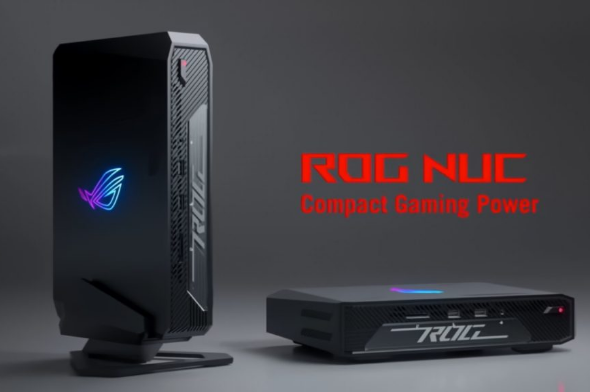Connection to DriversCloud Create a DriversCloud.com account Reset your DriversCloud.com password Account migration
NUC Mini-PCs: ASUS takes stock of its takeover of the Intel division
ASUS relies on Intel's latest Meteor Lake processors and NVIDIA's GeForce RTX 40 series cards for its gamer mini-PCs.
Very much in vogue in recent months, mini-PCs were in the spotlight at CES 2024 in Las Vegas. One manufacturer in particular was eagerly awaited by enthusiasts: Taiwanese company ASUS, which made a name for itself last summer when it announced the takeover of the NUC division from Intel. These mini-PCs imagined by the American firm had the objective - back in 2013 - of rethinking the design of PC computers to make them more compact, more economical. Intel followed up with a series of versions and variants, with varying degrees of success, but in 2023, it decided to throw in the towel.
ASUS has been very discreet since the announcement of this takeover, and in fact reserved its announcements for CES. In Nevada, it was mainly a question of one machine, even if other NUCs are planned, notably for the corporate world. The main machine showcased is none other than the ROG NUC. A mini-PC to which ASUS affixes the acronym of its gaming brand? Indeed, ROG stands for Republic of Gamers, so it's hard to imagine a more oriented name. In fact, the ROG NUC bears a striking resemblance to Intel's latest NUC gaming variants, the Serpent Canyon.
We don't yet have the exact measurements of the case, but ASUS claims a volume of just 2.5 liters. That's certainly bigger than the smallest mini-PCs on the market, but it's nothing at all for a gaming machine... and even more so if we look at the beast's technical specifications. ASUS has opted for a Meteor Lake Core Ultra 9 185H processor in its maximum configuration. A processor with 16 cores/22 threads, a 24 MB cache and capable of reaching a boost frequency of 5.1 GHz. No mean feat! What's more, it's backed up by DDR5 for a maximum of 128 GB of memory at 5600 MT/s, so there's plenty to do.
Of course, the graphics part is not to be outdone, and while the Core Ultra 9 is equipped with an integrated graphics solution, this is not enough for ASUS, which has therefore opted for either a GeForce RTX 4060 or a GeForce RTX 4070, depending on the version. To be perfectly honest, we find it hard to imagine all this power in such a small machine without the components reaching crazy temperatures. No doubt ASUS has thought long and hard about its cooling solution, but we can't wait to see it in action. Alas, no release date or price has yet been announced, although rumors seem to point to a release in the first quarter of 2024.








